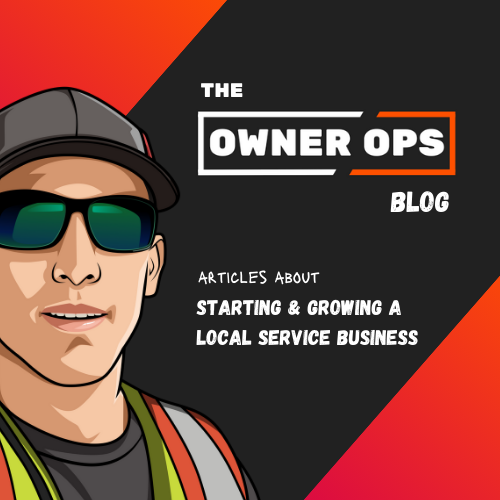Now that we’ve discussed how to get your first customers, let’s talk about nailing down your perfect target audience.
This guide, tailored specifically for service-based business owners and entrepreneurs, will walk you through ten tips to effectively identify your target market.
10 Tips To Identify Your Target Market Perfectly From The Start
1. Reflect on Your Expertise and Passion
As a service-based business owner or entrepreneur, your unique skills and passions play a pivotal role in shaping your target market. Before you go door-knocking, consider the areas where you excel and where your passion lies. Your target market should align with the services you offer and the value you bring to the table.
A good example? If you’re a pro tree trimmer who cares about thriving trees and habitat preservation, lean into this offering with the crunchy, granola types of customers who also care about this. While “land clearing” might not resonate with this crowd at first blush, explain how your services enhance the natural landscape for wildlife or native species.
Whatever your interests and passions are, turn that into part of your business and marketing.
2. Evaluate Industry Trends and Opportunities
Stay abreast of industry trends, emerging technologies, and market gaps within your niche. Identify areas where there is a growing demand for services or where existing needs are not being adequately met. This insight can help you carve out a niche within your target market.
For example, fire mitigation services are an incredible add-on for any land clearing or excavating service provider in regions prone to wildfires. And even in areas where it might not be top of mind for prospective customers, you can still market this as an “add-on” or bonus to your brush removal customers. You can even tie this into recent current events, like wildfires that are occurring in other parts of the country.
3. Identify Pain Points and Solutions
Put yourself in the shoes of your potential customers and identify the pain points they may be experiencing. What challenges are they facing in their businesses or personal lives? How can your services provide solutions to these pain points?
Tailor your offerings to address these specific needs effectively. Importantly, make sure you understand the difference between “features” and “benefits.”
A feature of your service might be tree removal.
A benefit of your service might be the peace of mind that comes from having that dead tree no longer overhanging their family home.
Think about how your service can meet your customers’ core needs and feelings.
4. Assess Your Competitors
Conduct a competitive analysis to understand who else is operating in your space and how they’re positioning themselves. Identify gaps in their offerings or areas where you can differentiate yourself. This will help you refine your target market and identify opportunities for growth.
As an example, if most of your competition are running around in beat-up cargo vans and dated logos, there’s a significant opportunity for you to elevate your brand and customer experience. Lean into great marketing with the help of a graphic designer and a great website developer for service businesses.
Invest in equipment that reflects the quality you’ll deliver.
Figure out what you can do to set yourself apart based on your learnings!
5. Define Your Ideal Client Profile
Create a detailed profile of your ideal client based on factors such as demographics, psychographics, behavior patterns, and buying preferences. Consider aspects such as industry, company size (for B2B services), income level, values, interests, and communication preferences.
This profile will serve as the blueprint for your target market strategy.
This can be a fun exercise. Sit down and brainstorm four customer avatars. Literally make up people that you would like to work with, then evaluate commonalities among them. Do they all make over $150K? Do they all care about convenience? What sets them apart, or maybe even what makes one a better customer than another?

6. Use Data and Analytics Where Possible
Leverage data and analytics tools to gain insights into your startup service business’ target market’s behavior and preferences.
Analyze website traffic, social media engagement, and customer feedback to identify patterns and trends. Use this data to refine your targeting efforts and optimize your marketing strategies. For example, if your target market is in their 50’s or 60’s, Facebook might be a better place to do social media marketing compared to Tik Tok. Or vice versa.
Understand these trends and use them.
7. Develop a Compelling Value Proposition
Craft compelling value propositions that resonate with your target market’s needs and aspirations.
Clearly articulate the benefits of your services and how they address specific pain points or challenges. Your value proposition should be unique, compelling, and clearly differentiated from competitors.
And, make it easy to understand. Your customer cares about their own story and situation, not the perfect piece of equipment you use to get the job done.
As the StoryBrand framework says, make your customer the hero of their own story; you’re just the guide to get them there.
8. Build Relationships and Networks
Cultivate relationships and networks within your target market to gain a deeper understanding of their needs and preferences. Attend industry events, join professional associations, and engage with potential clients through networking opportunities.
One newer place to do this is online in Facebook groups and similar. Find where your target market hangs out and offer free advice whenever possible. You don’t need to sell them, but just providing great advice consistently in the spaces your customers hang out will get noticed. You’ll be top of mind when they need your help.
Building rapport and trust with your target market can lead to valuable insights and business opportunities.
9. Stay Agile and Iterative
The market landscape is constantly evolving, so it’s essential to remain agile and iterative in your approach to identifying your target market. Continuously monitor changes in consumer behavior, industry trends, and competitive dynamics, and be prepared to adjust your strategies accordingly.
The best example of this is in changing economic developments. If you’re providing a luxury service, like pool cleaning and maintenance, think about how you might adapt to a tightened economy. What ancillary services might you offer that are less “disposable”?
10. Measure and Refine
Establish key performance indicators (KPIs) to measure the effectiveness of your targeting efforts. Track metrics such as conversion rates, customer acquisition costs, and customer lifetime value to gauge the success of your target market strategy. Use these insights to refine your approach and optimize your results over time.
One of the first things to start tracking is the number of “impressions” you make. How many people know about your business based on your footwork, word of mouth, etc.
As you grow, ask prospects where they heard about you, then make sure to track how many prospects turn into customers!

Get Down to Brass Tacks
For those just starting a service-based business, identifying your target market isn’t just a one-time exercise but can be an ongoing strategic imperative.
By leveraging your expertise, understanding industry trends, and focusing on delivering value to your ideal clients, you can effectively identify and reach the right audience for your services, driving sustainable growth and success in your business endeavors.
Are you interested in starting your own service business? Get plugged in with our community of service business entrepreneurs by joining OWNR OPS Alliance. This great group supports and empowers each other on the journey to entrepreneurial success – and we’re constantly learning as we grow. Join us today and let’s build thriving businesses together!




